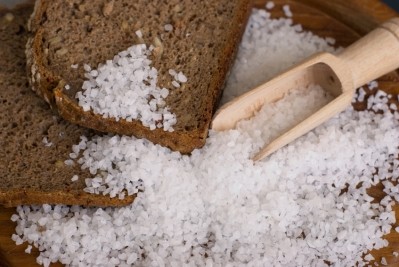Givaudan develops new language for salt’s effect in food
Food manufacturers are currently working to a mandate of reducing salt (sodium chloride) levels in packaged and prepared food, as excess salt in the diet has been linked to increased risk of high blood pressure and stroke. Considerable reformulation work is required to ensure products are still acceptable to consumers, however, and Givaudan already offers a range of solutions to restore lost taste in low sodium products known as TasteSolutions Salt.
The new language, called Sense It Salt, was created by the company’s flavourists, application technologists and sensory scientists for use when collaborating with customers over product development. It allows them accurately to assess the consequences of reducing salt, and the performance of other flavours or ingredients to restore taste in low sodium products.
The team came up with some reference products containing salt flavours to illustrate the perceptions of an expert sensory panel when tasting full-salt products, reduced-salt products, and reduced-salt products with the saltiness built back using flavour enhancers.
The descriptors, references and definitions were then validated by these sensory expert panels enabling a more precise description of food products in which salt is added or reduced, Sophie Davodeau, Global Head of Sensory, told FoodNavigator.com.
The feedback from the panel allowed the team to identify several temporal phases, where the effect of the salt altered over time. These phases have been mapped as a ‘salt curve’.
“We saw that the taste profile changed across the salt curve and concluded that the term ‘salty’ was no longer sufficient to describe the taste effects of salt or what happens sensorially when it is added, removed or replaced,” said Davodeau.
The new salt terminology slots into a wider lexicon of Sense It terms developed by Givaudan over time, which includes more than 350 descriptors for aroma, taste and mouthfeel.
Salt reduction demands
A number of countries have introduced new policies aimed at raising public awareness of salt intake, as many people consume far more than the 6g a day maximum recommended by the WHO. At the same time, since much of the salt consumed is in prepared and packaged food, rather than added at table, food firms are being asked to reduce levels as far as technically possible. In some countries, such as the UK, specific targets have been set for different product categories.
“Reducing salt is no longer a trend, it is a game-changer where nutritional quality and ‘healthiness’ is a key factor in product development,” said Laith Wahbi, global product manager savoury.
Givaudan says it is closely following regulatory changes on salt and sodium in foods, and is partnering with food companies to help them prepare for changes.
























